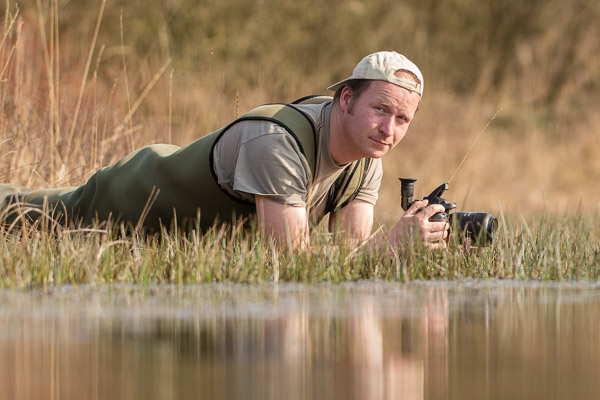
Date of birth: 4th of March 1977
How did you become passionate about nature photography?
For me nature photography and biology have always joined hands. When I became interested in nature, I wanted to capture it with my camera. And what I caught with my camera I wanted to study. Later, when I started studying biology my photography also got more serious. As of 2007 I’m combining two jobs as an ecologist and a nature photographer. And still, there is a lot of overlap between the subjects covered by both.
What do you take with you on a photo shoot?
That would depend a lot of the subject I’m after. But in general I like to be flexible and be able to shoot multiple subjects. So I usually carry multiple lenses (one or 2 macros and a wide angle and/or tele), a full-frame body and sometimes a crop-body as well, always a tripod and often I also carry portable field studio equipment to shoot subjects on a white background. This also includes 2 flash units.
What subject do you prefer to photograph and why?
I like many subjects! Although I can have great fun with flowers, I generally prefer animals like mammals, insects and amphibians. Just to make a choice here, I think my favourite are bats. Mostly because they are elusive, not much photographed and technically challenging.
What is your favorite nature preserve?
Again, I go where my subjects are, so I don’t really have one spot. But one of the areas I like to return to since childhood is the Maasduinen National park in the northern part of the province of Limburg. It’s a versatile area with forest, sand dunes and fens.
What is your favorite shooting position?
Low to the ground. I like to work with low points of view with blurry foregrounds. I hardly ever work without an angle viewfinder. Often I won’t even use a tripod, but put my camera directly on the ground.
Which nature photographer do you admire?
There are many. I couldn’t just name one. I get inspired by many different photographers and all for different reasons or subjects, both in past as present.
What quality must a nature photographer absolutely have?
Determination. Apart from some lucky shots good images don’t come easy. It takes time, vision, preparation and trial and error.
Which light situation do you prefer?
I work a lot with flash lights, so I often create my own light. But nothing can beat the first warm sun rays on a misty morning.
Which setting do you prefer: Manual-Aperture Priority-Shutter Priority?
In general I use aperture priority. Depth of field (aperture) is one of the most important tools in photography. I want to have control over that. To me shutter speed is less important. Having said that there are many occasions where I use manual control, especially at night, or when using flash lights.
In percentage terms how much time do you take to create an image and to process the image?
Taking an image is a process. Once in the field you work towards a certain goal. This can take hours in which I can take many images. Processing doesn’t take so much time (I don’t edit much), but selecting does. Moreover, this doesn’t cover the entire process. Preparation, travel, permissions, failed efforts,… can take long periods of time, even years.
Which processing program do you use?
I use Lightroom for just about anything, archiving, keywording, selecting and editing. Only when I need extensive editing, like major cleaning or stacking, I switch to Photoshop. Also most of my field studio work is edited in Photoshop.
Do you have any advice for future nature photographers?
Although there is no problem to go on a hike and see what subject you bump into, it usually pays off to prepare. Think ahead what subject you want to photograph, in what setting. Learn about your subject, then you select your location.
You can find out more about Paul van Hoof on his website: http://www.paulvanhoof.nl/